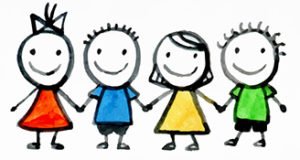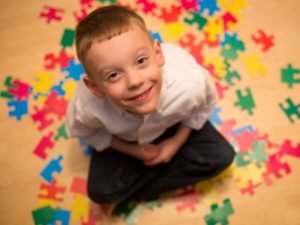Autism Spectrum Disorder
Sitting at a table, a young child is intent on lining up a bunch of matchbox cars, from largest to smallest. This child has been doing this repeatedly for 2 hours now. Why hasn’t he decided to do something else? Doesn’t he get bored doing the same thing for so long? There is a whole box of toys in the corner, but he seems oblivious to all other options. The parents seem unfazed, but to an outsider, it may be a bit unsettling. What could be even more unsettling is when this outsider attempts to engage the child in a game of racing with his cars and suddenly, the child becomes extremely anxious and starts screaming and throwing those cars. What this visitor doesn’t realise is that this amazing little kid has what is termed as Autism Spectrum Disorder and this behaviour he is exhibiting is entirely ordinary in this family’s everyday life.
“Autism Spectrum Disorder (ASD) and autism are both general terms for a group of complex disorders of brain development. These disorders are characterized, in varying degrees, by difficulties in social interaction, verbal and nonverbal communication and repetitive behaviours”.
Autism is also characterized by restricted, repetitive patterns of behaviour, interests, or activities… repetitive motor movements, use of objects… insistence on sameness… highly restricted, fixated interests that are abnormal in intensity or focus. All of this explains the above illustration to a tee. The child was fixated on putting his cars in a specific pattern, this was his only interest and, unbeknownst to the guest, this routine is what this child insists on doing for hours at a time, without interruption. When his routine was interrupted, he reacted in the only way he knew how to because he is still learning to regulate his emotions and how to effectively communicate with the outside world. Some children with ASD can learn somewhat normal communication skills if they are on the high functioning end of the spectrum, but others on the low functioning end of the spectrum continue to be uncommunicative their entire lives. Communication and social interaction, or lack thereof, is a key characteristic of ASD as well as marked difficulties with behaviour and sensory sensitivities. In recent years, the Diagnostic and Statistical Manual of Mental Disorders (DSM-5) has replaced the previous sub-divisions of autism, Asperger’s Syndrome and pervasive developmental disorder-not otherwise specified (PDD-NOS) under the umbrella term Autism Spectrum Disorder. This group of developmental disorders is now diagnosed in terms of severity, depending on support needs based on the difficulties in two areas-deficits in social communication, and fixated interests and repetitive behaviours (1).

There are 3 levels based on these new criteria, level 3 being the most severe and requiring very substantial support. The child in the illustration would be considered a level 3 because he severely lacks verbal communication skills, has extreme difficulty coping with change and suffers great distress when changing activities. Communication and social skills are vital skills needed to carry out your daily life. Without a basic foundation of these skills, even the simplest needs cannot be met, such as getting to the bathroom or telling someone what you want to eat for dinner. When learning about an ASD child, it is important to notice whether they are having problems with expressive language, the language they use to express themselves, or if the problem is with them being unable to understand what you are saying, known as receptive language.
Some people with autism can learn different forms of communication and basic social skills through speech language therapy. The course of treatment depends on the severity of ASD, and any single or combination of therapy applications may apply. Some people might be able to learn to utilize simple sight word or picture cards, some benefit from sign language, while still others may be able to learn to communicate with full sentences.
 Another characteristic that sometimes is overlooked with a diagnosis of ASD is sensory issues. “Children with ASD… see their world in a very different way. The filtering mechanism in their brains often works in a different way in assimilating the senses such as touch, smell, hearing, taste and sight. They may be extremely sensitive to some senses… or be unresponsive to sensations that their parents find unpleasant, such as extreme heat, cold or pain.” (4).
Another characteristic that sometimes is overlooked with a diagnosis of ASD is sensory issues. “Children with ASD… see their world in a very different way. The filtering mechanism in their brains often works in a different way in assimilating the senses such as touch, smell, hearing, taste and sight. They may be extremely sensitive to some senses… or be unresponsive to sensations that their parents find unpleasant, such as extreme heat, cold or pain.” (4).
Children with ASD may have issues with textures of certain clothes or foods; they may prefer to stay in the shade or in dimmed rooms because light bothers their eyes; they may be clumsy and have poor coordination. These symptoms are because the brain of someone with ASD filters senses a bit erratically compared to the brain of someone without ASD. Whereas you or I may feel the pain of a stubbed toe and call out an expletive, someone with ASD would have no reaction whatsoever, or an opposite reaction such as giggling, or if we were freezing cold outside in the snow, someone with ASD wouldn’t even notice that his fingers are turning blue and his nose is running, and lips are going numb from the cold. This can sometimes lead to dangerous situations if the parents are not aware of the issue. A boy might be playing at the park and the parents turn their backs for just a moment and miss him falling from the monkey bars and hitting his head. He doesn’t even cry, he just continues playing, unaware that his head is bleeding. The parents then see the blood and proceed to take the boy to the hospital only to find out that the boy also suffered a sprained ankle which is extremely swollen, but they were completely unaware because the boy showed no signs of having any pain in the ankle, not even limping. Generally, parents will notice signs early on when the child is still in infancy, such as a first time of trimming nails and they get a bit of the tip of the finger and the baby has no reaction at all, or the baby screams uncontrollably when they put socks on him or anything else that is tight. These are very early signs of sensory input issues and are a sub-category of ASD known as Sensory Input Disorder or Sensory Processing Disorder. Sometimes, these challenges can be overcome just by slowly and gently introducing the items that cause a negative reaction, some may need therapeutic interjection to overcome, and still other things may continue to cause a negative reaction or no reaction at all throughout their entire life. A child can be taught, through therapy, what causes pain or the reactions, such as bruises or blood, that happen due to infliction of pain or injury and can then report it to their parents if anything happens but depending on the severity of ASD, sometimes, even therapy is unable to incorporate a way to communicate that an injury has occurred. In these cases, parents and caregivers must do all they can to prevent injuries by “child-proofing” any area that the child will be in. Mattresses may need to be on the floor if the child has a habit of jumping off the bed. Toys will need to be soft and pliable unless playtime is supervised. In some cases, such as when a child is extremely anxious, parents may need to install padding on the walls and remove hard surfaces from the child’s bedroom such as dressers and bed frames.
Knowing the various characteristics of ASD can help you to determine if a talk with your child’s pediatrician is warranted because the earlier you can get a diagnosis, the earlier you can get your child the help they will need to live a more fulfilling life. Sometimes, though, even the best therapy will not have much benefit for a child with an extreme form of autism. This does not mean that you shouldn’t help your child live a full and happy life through various forms of therapy and play. With the many options available for treatment and more research continuously advancing the understanding of the field of ASD, it is well worth bringing up your concerns and getting them addressed.
1 https://www.autismspectrum.org.au/content/aspergers-or-autism-what-are-different-types-1
2 https://www.speechandlanguagekids.com/5-principles-of-speech-therapy-autism/
3 https://www.speechandlanguagekids.com/5-principles-of-speech-therapy-autism/